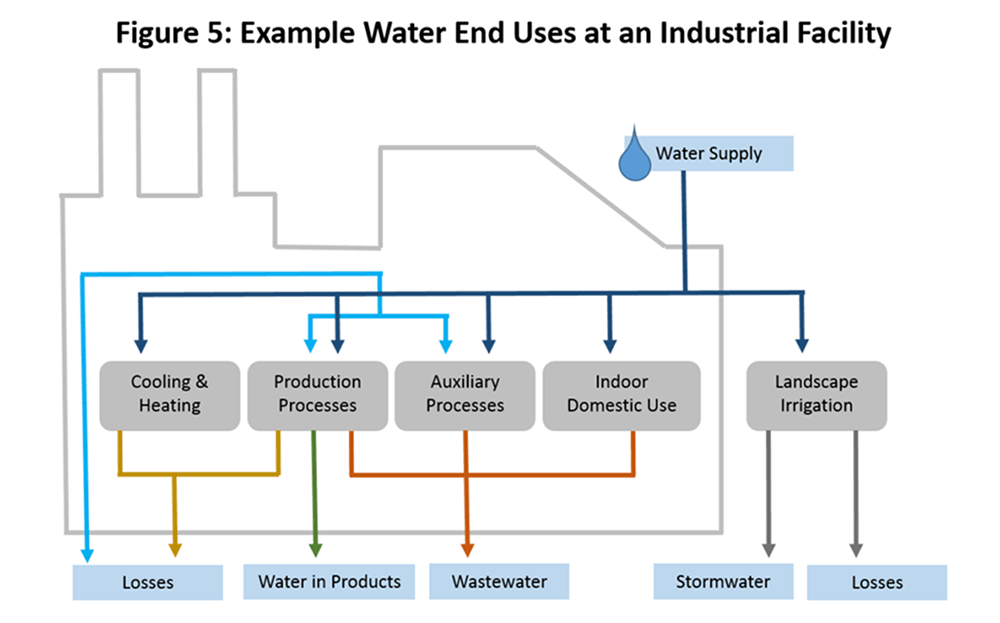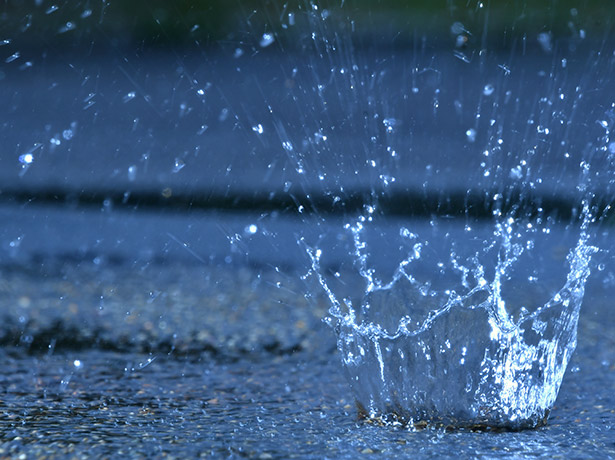It’s likely that every manufactured product uses water during some part of the production process, whether that’s for creating the product, input into the product, or cooling the equipment used in the manufacturing. Depending on where the manufacturing site is located, this dependence on water can create substantial supply pressures to the groundwater, surface-water, and public water supply. In order to produce goods, businesses must have a reliable means of sourcing clean water, monitor water quality, integrate reuse capabilities, and dispose of or treat wastewater appropriately.
Let’s look at some of the ways water is used throughout most industrial facilities:

Figure 1 https://www.epa.gov/sustainability/lean-water-toolkit-chapter-2
- Production processes and in-product use – including water purification and distillation, water used inside of the end-product, fabrication
- Ways to reduce water use – concentrated end-products (i.e., cleaning supplies that reduces packaging, production water, and transportation costs)
- Auxiliary processes – can include washing, cleaning, and sanitation as well as pollution control. These processes typically produce wastewater, and undesirable by-product that contains contaminants and can be hazardous or non-hazardous depending on the chemicals used.
- Ways to reduce water use – depending on the industry, it may not be possible to reduce water use for cleaning and sanitation, however by treating wastewater on-site, facilities can reuse the treated industrial wastewater (i.e., effluent) for various purposes.
- Cooling and heating – traditionally with the highest water demand, cooling towers and boilers require large amounts of water and energy.
- Ways to reduce water use – keeping these systems well maintained and functioning properly will reduce water loss, particularly from leaks and inefficiencies.
- Indoor domestic use – this includes your day-to-day behaviors of employees, including bathrooms, kitchens, and laundry rooms.
- Ways to reduce water use – install low-flow fixtures and water-efficient appliances where applicable.
- Irrigation – most, but not all manufacturing sites incorporate some form of irrigation for rainwater management and landscaping. The water use for this process can vary significantly, however there are essential considerations both in terms of stormwater runoff and water loss through system design and flora selection.
- Ways to reduce water use – install native and drought-resistant landscaping to reduce irrigation frequency, utilize rainwater catchment systems for irrigation, utilize smart technology for scheduling and sensing soil-moisture.


